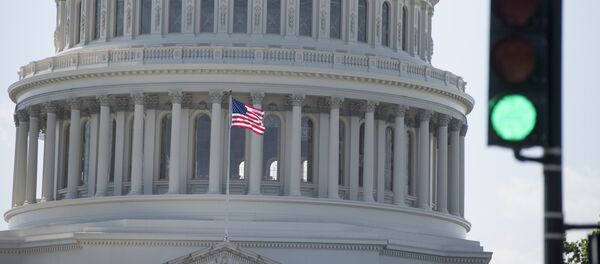Kristian Rouz – Upbeat figures for this outgoing quarter’s consumer spending and business investment point to a further acceleration in US GDP. However, with stock prices increasing faster than the expansion of the Main Street economy, and structural imbalances still affecting output capacity, there are downside risks which remain in place.
US consumer spending rose last month, whilst shipments of capital goods mostly increased for the 10th consecutive month in November as well.
READ MORE: The Return of Subprime: Deteriorating US Auto-Loan Quality Sounds Alarm
According to a report from the Commerce Department, US consumers spent 0.6 percent more in November, compared to a 0.2-percent rise the previous month. Household spending increased amid higher demand for automobiles and recreational goods, as well as higher utility bills due to the colder weather.
"Consumers are still out there spending, but their purchases are being supplemented by low energy costs, credit and a reduction in savings rather than organic income growth," Lindsey Piegza of Chicago-based Stifel Fixed Income said. "Without a sustained improvement in wages, consumers will struggle to maintain even today’s moderate pace of consumption."
Wage inflation, along with the broader price index measure remain subdued. However, the tax reform – signed into law by President Trump Friday – is poised to contribute to higher inflation in the near-to-medium-term.
This as salary raises and bonuses arrived just ahead of the Christmas spending season – giving the economy a solid boost at the end of the fourth quarter. That said, the broader GDP is poised to accelerate above the current 3.2-percent year-on-year reading for the past quarter.
"Businesses aren’t just giving money away," Scott Brown of St. Petersburg, Fla.-based Raymond James Financial said. "It’s the tightness in the labor market."
The macro figures also showed a decline in household savings – a sign of concern for longer-term forecasters. Savings dropped to their lowest in almost nine years, meaning consumers are rushing to spend, trying to outpace the ongoing Federal Reserve tightening cycle, as credit affordability is shrinking rapidly.
The debt-driven expansion in the consumer market – which contributes to over two-thirds of the US GDP – is wearing out, and economists are shifting their focus to the possible effects of President Trump’s economic reforms. White House policies are expected to eliminate the structural discrepancies caused by the eight previous years of debt-driven economic recovery.
Personal income rose 0.3 percent in November, coupled with a 0.4-percent uptick in wages.
"In our retail business, in our operations, especially at the lower levels of our employee base, there is organic inflation going on" in salaries, Tayfun Tuzun of Fifth Third said.
Additionally, the Commerce department observed, household wealth has increased over the past year due to the record-high stock prices and the rising home values amid the tight market, constrained on the supply-side.
READ MORE: National Security Strategy? More Like Infowar Strategy!
Since the Great Recession and up to date, US employers have tried their hardest to contain any expansion in wages – by resorting mainly to the rampant mass migration, H1B visas, and illegal border crossings. However, the tightening labor market and immigration policies under the current administration leave employers little choice but offer more competitive wages amid the shrinking workforce.
"The point to stress is that it’s happening, and it’s happening because of economic fundamentals — not necessarily because of what’s in the reform. The way it could add to economic growth, and wage increases, and so on, is if companies do believe that this is going to benefit them, they will do more investment," said Yelena Shulyatyeva of Bloomberg Economics.
Tax cuts are poised to boost business investment, including in labor costs, and this would translate into higher consumer purchasing power. This, however, has its downsides as well, as most consumers are expected to habitually go deeper into debt, rendering home prices, for example, even higher.





